Bunker Delivery Note Amendments Enter into Force
Amendments to the bunker delivery note relating to the supply of marine fuel oil to ships which have fitted alternative mechanisms to address sulphur emission requirements entered into force on 1 January 2019.According to a press release from International Maritime Organization (IMO), the amendment enters into force as the shipping industry counts down to 1 January 2020, when the limit for sulphur in fuel oil will be reduced to 0.50% m/m outside emission control areas (ECAs), from 3.5% currently.The new limit under IMO's MARPOL treaty will have significant benefits for the environment and human health.In ECAS, the limit will remain at…
Carriage Ban Adopted to Implement Sulphur 2020 Limit
An amendment to support consistent implementation of the forthcoming 0.50% limit on sulphur in ships fuel oil was adopted by the International Maritime Organization (IMO) on Friday (26 October), during the current session of the Marine Environment Protection Committee (MEPC 73).The new 0.50% limit (reduced from 3.50% currently) on sulphur in ships' fuel oil will be in force from 1 January 2020, under IMO's MARPOL treaty, with benefits for the environment and human health.The complementary MARPOL amendment will prohibit the carriage of non-compliant fuel oil for combustion purposes for propulsion or operation on board a ship - unless the ship has an exhaust gas cleaning system ("scrubber") fitted.
IMO Sets 2020 Date for Ships to Comply with Emission Requirements
In a landmark decision for both the environment and human health, 1 January 2020 has been set as the implementation date for a significant reduction in the sulphur content of the fuel oil used by ships. The decision to implement a global sulphur cap of 0.50% m/m (mass/mass) in 2020 was taken by the International Maritime Organization (IMO), the regulatory authority for international shipping, during its Marine Environment Protection Committee (MEPC), meeting for its 70th session in London. It represents a significant cut from the 3.5% m/m global limit currently in place and demonstrates a clear commitment by IMO to ensuring shipping meets its environmental obligations.
Suezmax Newbuilds Feature MAN Engines with EGR
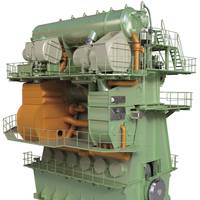
Hyundai’s Ship Building Division (HHI-SBD) has finalized a contract for two Suezmax tankers for Turkish shipowner, Ditas Shipping. The 158,000-cubic-meter crude-oil tankers will each be powered by individual MAN B&W 6G70ME-C9.5 two-stroke main-engines that feature integrated Exhaust Gas Recirculation (EGR) systems. While there are already IMO Tier III-compliant vessels with EGR systems in service, the Suezmax newbuildings will be the first vessels with keel-laying after January 1…
Preventing Loss of Propulsion After Fuel Switch to Low Sulfur Distillate Fuel

The International Convention for the Prevention of Pollution from Ships (MARPOL) ANNEX VI Regulation 14 requires ships with Marine Compression-Ignition Engines at or Above 30 Liters per Cylinder use fuel with sulfur content less than 0.1%, after 01 January 2015 within the Baltic Sea area – as defined in Annex I of MARPOL, North Sea area – as defined in Annex V of MARPOL; within 200 miles of the North American area and when operating in the United States Caribbean Sea area – as defined in Appendix VII of Annex VI of MARPOL.
Low Sulphur Fuel Requirements from 1 Jan
Ships trading in designated emission control areas will have to use on board fuel oil with a sulphur content of no more than 0.10% from 1 January 2015, against the limit of 1.00% in effect up until 31 December 2014. The stricter rules come into effect under the International Convention for the Prevention of Pollution form ships (MARPOL) Annex VI (Regulations for the Prevention of Air Pollution from Ships), specifically under regulation 14, which covers emissions of Sulphur Oxides (SOx) and particulate matter from ships. These requirements were adopted in October 2008 by consensus and entered into force in July 2010. The emission control areas established under MARPOL Annex VI for SOx are: the Baltic Sea area…
IMO: New ECA Sulfur Limits FAQ
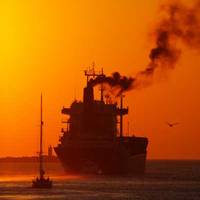
Ships trading in designated emission control areas will have to use onboard fuel oil with a sulfur content of no more than 0.10% from January 1, 2015, against the limit of 1.00% in effect up until December 31, 2014. To help provide further clarification on the new regulations, the International Maritime Organization (IMO) has published a frequently asked question (FAQ) list, available here: http://www.imo.org/MediaCentre/HotTopics/GHG/Documents/sulfur%20limits%20FAQ.pdf. The stricter…
Shell Offers Complete Lubricant Lineup for ECA-bound Vessels

Today, Shell Marine Products (SMP) introduced Shell Alexia S3, its solution for large vessels with two-stroke engines entering into waters where the revised emission control area (ECA) regulations will come into force on January 1, 2015. Shell Alexia S3 will be available to customers from December 2014 in major ports across SMP’s network of more than 500 ports in more than 40 countries. SMP now offers a complete suite of lubricants for all types of engines. Shell Alexia S3 is the latest in SMP's Shell Alexia line of two-stroke engine oils…
IMO’s MEPC Meets for 66h Session
The Marine Environment Protection Committee (MEPC) of the International Maritime Organization (IMO) meets for its 66th session from 31 March to 4 April 2014, at IMO Headquarters in London. Items on the agenda include the consideration of proposed amendments to the MARPOL to make the audit scheme mandatory; the review of environmental provisions in the draft Polar Code and associated draft amendments to make the Code mandatory, and the implementation of energy-efficiency regulations and the Ballast Water Management and Ship Recycling Conventions. The MEPC will consider, with a view to adoption, draft amendments to MARPOL Annexes I through to VI to make the use of the IMO Instruments Implementation Code (III Code) mandatory.
IMO SOLAS Briefing
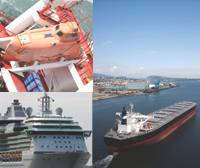
SOLAS, MARPOL amendments entered into force on 1 January 2014. IMO reminds all of immediate implications to shippers, mariners and vessels. Amendments to SOLAS, MARPOL and the Load Lines protocol entered into force on 1 January 2014: A number of amendments to the International Convention for the Safety of Life at Sea (SOLAS), the International Convention for the Prevention of Pollution from Ships (MARPOL) and the 1988 Load Lines Protocol entered into force or took effect from 1 January 2014.
Maritime Safety & Environment Rule Changes Clock In
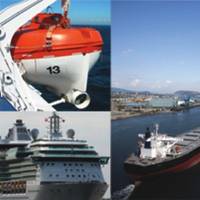
The amendments cover passenger ship safety (in relation to safe return to port after a flooding casualty); the testing of free-fall lifeboats; minimum safe manning levels; prohibition of blending onboard; the revised MARPOL Annex III; the United States Caribbean Sea Emission Control Area; and the Winter Seasonal Zone off the southern tip of Africa. Amendment to SOLAS regulation II-1/8-1, introduces a mandatory requirement for new passenger ships for either onboard stability computers or shore-based support…
SOLAS, MARPOL Amendments in Effect
A number of amendments to the International Convention for the Safety of Life at Sea (SOLAS), the International Convention for the Prevention of Pollution from Ships (MARPOL) and the 1988 Load Lines Protocol entered into force or took effect from January 1, 2014. The amendments cover passenger ship safety (in relation to safe return to port after a flooding casualty); the testing of free-fall lifeboats; minimum safe manning levels; prohibition of blending onboard; the revised MARPOL Annex III; the United States Caribbean Sea Emission Control Area; and the Winter Seasonal Zone off the southern tip of Africa. amendment to SOLAS regulation XI-1/2 on enhanced surveys…
Bunker Industry Supports 2015 Fuel Availability Review
The International Bunker Industry Association (IBIA) says it supports the UK government’s call for the International Maritime Organization (IMO) to bring forward its review of the availability of 0.50% sulphur fuel. As more and more locations declare ECA requirements, the latest being Hong Kong this week, the greater the demand for low sulphur fuel. IBIA considers that the shipping industry needs some definitive dates to plan implementations on board; the same information is required for the refining industry and the bunker sector. Uncertainty around dates is likely to delay crucial investment decisions and IBIA believes that the shipping and oil industries need clarity.
IBIA Welcomes Early IMO Fuel Availability Study

The International Bunker Industry Association (IBIA) supports the UK government’s call for the International Maritime Organization (IMO) to bring forward its review of the availability of 0.50% sulphur fuel. As more and more locations declare ECA requirements, the latest being Hong Kong this week, the greater the demand for low sulphur fuel. The shipping industry needs some definitive dates to plan implementations on board; the same information is required for the refining industry and the bunker sector.
MEPC Propose Delay 2016 Tier lll ECA Engine Standard
IMO's Marine Environment Protection Committee's recent (MEPC), 65th session, agreed a draft amendment on implementation date for Tier III engines. MEPC considered and agreed to proposed draft amendments to MARPOL Annex VI regulation 13 on Nitrogen Oxides (NOx), to amend the date for the implementation of “Tier III” standards within emission control areas (ECAs) to 1 January 2021, from the current effective date of 1 January 2016. The draft amendments will be circulated for consideration at MEPC 66 in 2014, with a view to adoption. NOx control requirements apply to installed marine diesel engines of over 130 kW output power, and different levels (Tiers) of control apply based on the ship construction date.
IMO MEPC Implements Further Energy Efficiency
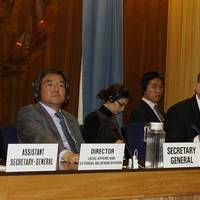
The Marine Environment Protection Committee (MEPC) of the International Maritime Organization (IMO) met for its 65th session from May 13-17 2013, at IMO Headquarters in London. The committee made significant progress in its work on further developing energy-efficiency regulations; adopted an MEPC resolution on rromotion of technical cooperation and transfer of technology relating to the improvement of energy efficiency of ships; and gave the go-ahead to carry out an update to the greenhouse gas (GHG) emissions’ estimate for international shipping.
New Fuels, New Rules & New Tools

Helping the Maritime Community adapt to strict emission regulations. What has changed during 2012 in the maritime world and how has it impacted industry? It is recent IMO Marine Environment Protection Committee (MEPC), changes. IMO has adopted amendments to the International Convention for the Prevention of Pollution from Ships (MARPOL). These changes will have a vast and fundamental impact on the maritime industry and the world over the next few years. With new IMO regulations pertaining to emission control areas…
IMO Reminder on North American ECA Controls
North American emission control area comes into effect on 1 August 2012. The North American Emission Control Area (ECA), under the International Convention for the Prevention of Pollution from Ships (MARPOL), comes into effect from 1 August 2012, bringing in stricter controls on emissions of sulphur oxides (SOx), nitrogen oxides (NOx) and particulate matter for ships trading off the coasts of Canada, the United States and the French overseas collectivity of Saint-Pierre and Miquelon. Amendments to MARPOL Annex VI (Regulations for the prevention of air pollution from ships) to establish the North American ECA entered into force on 1 August 2011, with a 12-month period before becoming effective.
Reminder that North American ECA Operative in August
The MPA circular reminds the Shipping Community on the entry into effect of the North American Emission Control Area (ECA) under MARPOL Annex VI and urges the community to take early actions for compliance with the regulations. From 1 August 2012, all ships operating within the North America ECA shall only use fuel oil with sulphur content not exceeding 1.00% m/m, and from 1 January 2015, fuel with sulphur content not exceeding 0.10% m/m. Shipowners and operators are advised to ensure that the absolute sulphur content of fuel oil used onboard ships does not exceed the limits as required under Regulation 14.4 of MARPOL Annex VI. Shipowners…
North American Emission Rules for Ships to Enter Force

On 1 August 2012, enforcement of the North American Emissions Control Area (ECA) is due to commence. This third and largest ECA (the other two encompass the North Sea and the Baltic Sea areas) was first proposed by Canada and the United States on 27 March 2009. France quickly joined in on behalf of Saint Pierre and Miquelon, its territory off the Atlantic coast of Canada. The proposal was approved by the IMO on 26 March 2010 by means of an amendment to Annex VI (Regulations for Prevention of Air Pollution from Ships) to the MARPOL Convention.
North American Emission Control Area Now in Effect
The North American Emission Control Area (ECA), under the International Convention for the Prevention of Pollution from Ships (MARPOL), is in effect from 1 August 2012. Stricter controls on emissions of sulphur oxides (SOx), nitrogen oxides (NOx) and particulate matter for ships trading off the coasts of Canada, the United States and the French overseas collectivity of Saint-Pierre and Miquelon are now brought in. There are now three designated ECAs in effect globally, the other two being SOx ECAs in the Baltic Sea area and the North Sea area. A fourth area, the United States Caribbean Sea ECA, covering certain waters adjacent to the coasts of Puerto Rico and the United States Virgin Islands…






